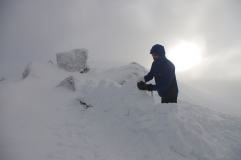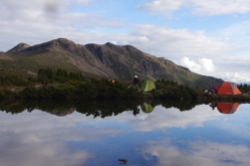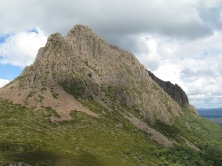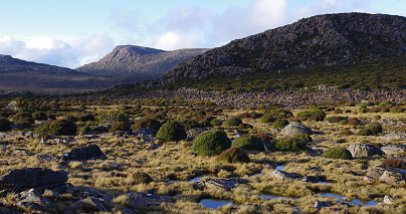It is 20 years since the 2003 Alpine fires tore through much of the Victorian high country.
On 8 January 2003, lightning strikes ignited 87 fires, 8 of which would join to form the largest fire in Victoria since the 1939 Black Friday bushfires, burning through 60% of the Alpine National Park.
For more than 40 days, several high country townships, including Mt Hotham and Dinner Plain, were under threat from a fire that would ultimately burn 1.3 million hectares, destroying 41 homes and upwards of 9,000 livestock.
According to Forest Fire Management Victoria (FFMV), emergency workers and volunteers from across 35 agencies, including more than 4,000 firefighters, helped protect community, landscapes and property over that summer. There is a great set of images from the fires on the FFMV facebook page.
Since that time, fire has become more common in the high country. A lot has changed since then, both in terms of how we fight fires, and the resources we have available to do so.
Snow Gum woodlands cover much of the higher elevations of the Victorian mountains. But wildfire has been devastating large swathes of snow gum habitat, with significant fires in the Victorian High Country in 1998, 2002/3, 2006/7, 2013 and 2019/20. Much of Kosciuszko National Park was burnt in 2003 and 2019/20. South Eastern Australia suffered from a drought that lasted more than a decade and this has increased the severity of the fires that have occurred since the turn of the 21st century. It is estimated that the 2019-2020 bushfires impacted 462 km2 (33%) of mapped Snow Gum forest that regularly has seasonal snowpack.
This has enormous implications for how we manage these woodlands. As was shown in 2003, and more recently during the fires of 2019/20 in really bad fire seasons we still don’t have enough resources to protect this vegetation community from destructive fires.
The world has changed. We need to keep fire out of Snow Gum woodlands as they recover
One significant piece of research that should inform our understanding about fire on Snow Gum forests looked at the impacts of fires on Lake Mountain and the Buffalo Plateau. The report How snow gum forests and sub-alpine peatlands recover after fire was written by Fiona Coates, Philip Cullen, Heidi Zimmer, James Shannon. They used the long unburnt Baw Baw Plateau as an example of what these systems could be like in the absence of fire events.
They found that:
- Even areas that have been subjected to hot and very destructive wildfire, such as on the Lake Mountain plateau during the 2009 Black Saturday fires, can be expected to recover – provided we can keep fires out of these systems. However, this will take time. For instance, they suggest it will take the forests at Lake Mountain at least 70 years to return to pre-fire structure. No specific management needs to be undertaken to aid this process beyond excluding fires
- The researchers repeatedly note that there are serious doubts about the value of fuel reduction burning in these forests. They note that low intensity fires negatively impact on tree resprouting ability
- Repeated fires change the character of Snow Gum forests, creating a multi stemmed forest of shorter trees. That is, forests get denser, with more of a ‘Mallee’ aspect to how the trees grow. They call this ‘potentially irreversible degradation of stand structure’, which has already happened to the extent that old growth Snow Gum forests are now rare. They note that the traditional open forest structure of snow gum forests will not be able to develop if there are repeated fires, as the result over time will be that forests will become dominated by lots of small stemmed trees rather than a ‘traditional’, open Snow Gum forest
- Repeated fires can also inhibit the ability of trees to store carbon above the ground.
- They say that ‘fire exclusion is imperative to preserve landscape quality and representation of long unburnt snow gums’
- They recommend that current ‘fire and cattle exclusion policies’ at places like Mt Buffalo and Lake Mountain be continued.
The core message from researchers like Philip Zylstra is clear:
- We have evidence that over time forests become less flammable
- Long unburnt snow gums are their best protection against fire. When these forests burn it is unlikely to be of a high severity
So this means we need sufficient resources to protect recovering Snow Gum woodlands from fire, even in bad seasons where there are many fires across the landscape.
For this to be possible, we need additional firefighting resources.
The Victorian government has responded in many ways to the threat of m ore frequent fire, investing heavily in career firefighters. Many landscape scale fire breaks have been cut across the landscape. In some areas remote mountain tops now have additional water supplies to allow firefighters to refill their trucks without having to travel. And we have a fleet of around 150 aircraft over summer which is available to be deployed rapidly to stop small starts (for instance lightning strikes) before they turn into large blazes.
We need extra firefighting capacity to protect the mountains
It is clear we will need more capacity to fight fires in the mountains. There are four obvious options:
- Continue to invest in air support to fight fires in remote areas, with continued resource sharing between the states and overseas jurisdictions, to access additional planes and helicopters when needed. Victoria has done a good job in this regard, with a large fleet available over summer. The federal government, however, needs to get on with establishing a publicly owned air fleet of large air tankers (LATs).
- Continue to increase the number of paid seasonal firefighters, including additional allocation of funds and training to expand the number of remote area firefighters. In a good move, the Victorian government has done this, and added extra FFMV firefighters to existing crews.
- The federal government should establish a national remote area firefighting force which can be deployed as needed across Tasmania and mainland states when World Heritage and National Parks are at risk. This was recommended by a Senate inquiry after the devastating fires in Tasmania of 2016.
- A fourth option to consider is to develop a new volunteer firefighting force specifically tasked with adding capacity to state government firefighting agencies when fires threaten national parks, wilderness and World Heritage Areas. NSW, Tasmania, the ACT already have such volunteer groups. They would allow us to have extra skilled firefighters available when needed, without the need to sustain paid staff or local brigades. If the new teams were designed in such a way that people from urban areas could sign on, it could provide a huge boost in numbers of firefighters in bad summers.
For details on how this team could be formed and operated, please check here.
Find out more
Check the notes from a forum called ‘Climate change and the Victorian Alps – preparing for the fires of the future’, which was held at Mt Hotham during the winter of 2022 for more information about the way fie is changing in the mountains and how we should respond.
























































1 Pingback